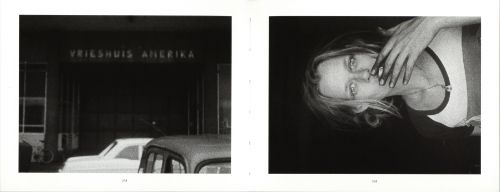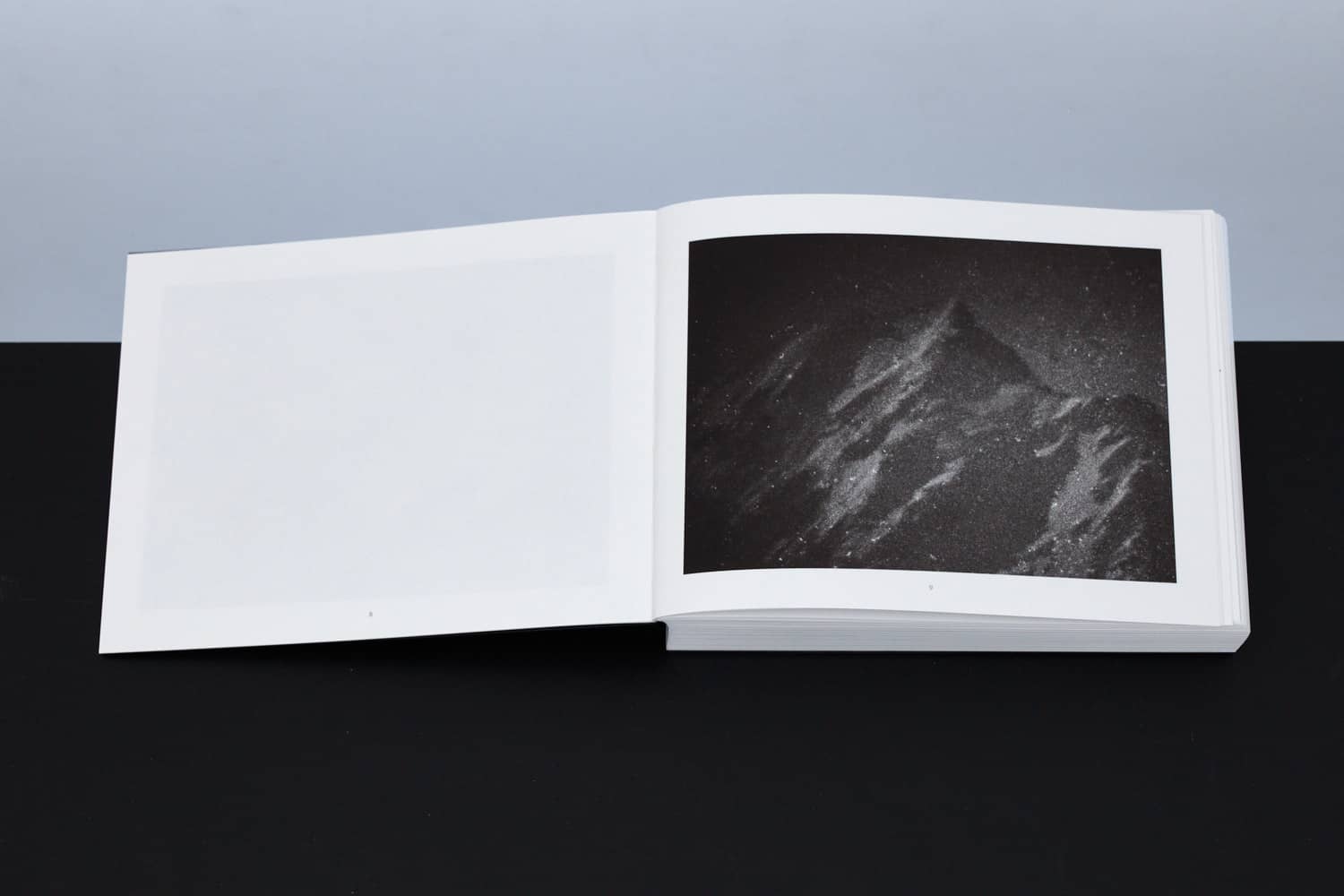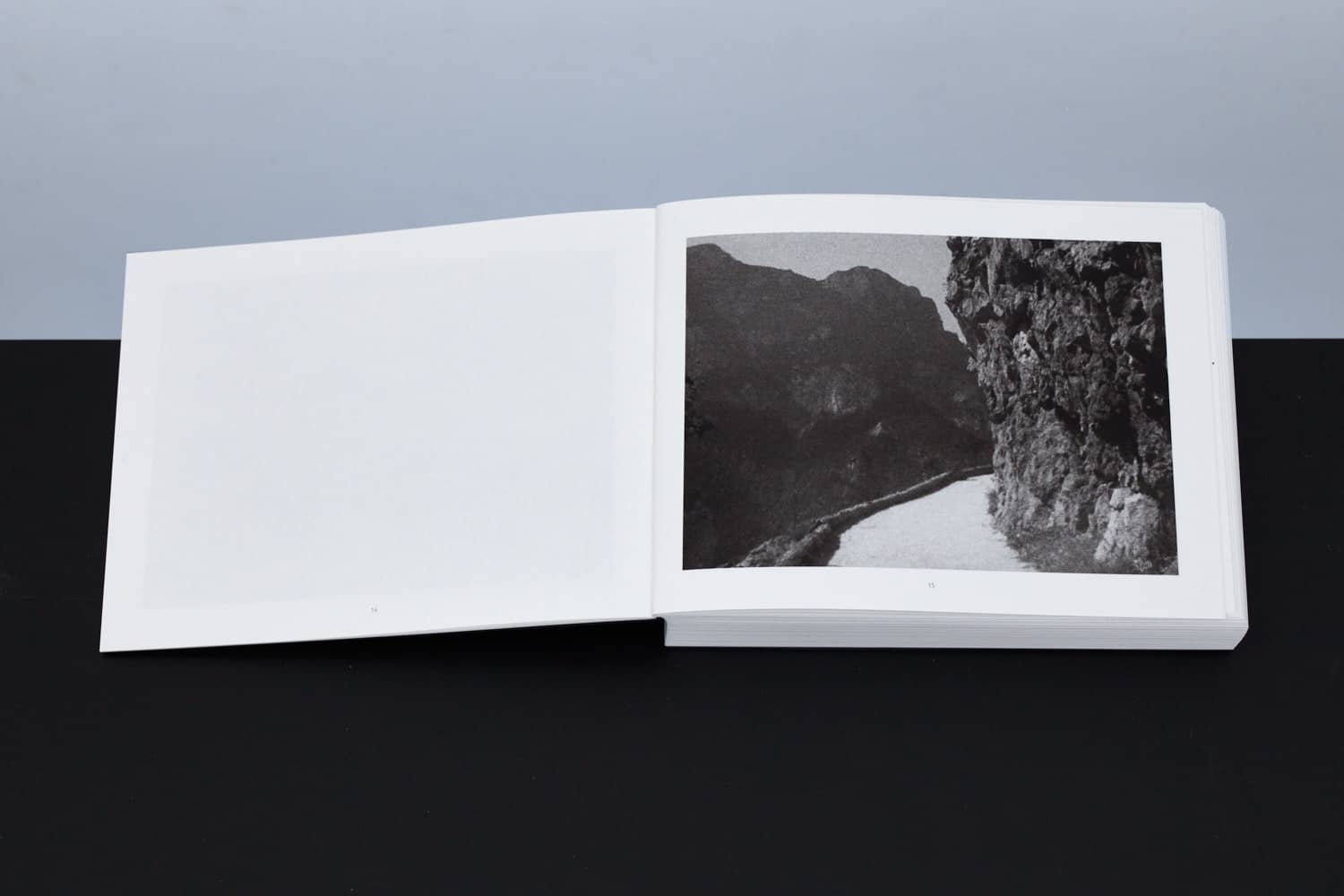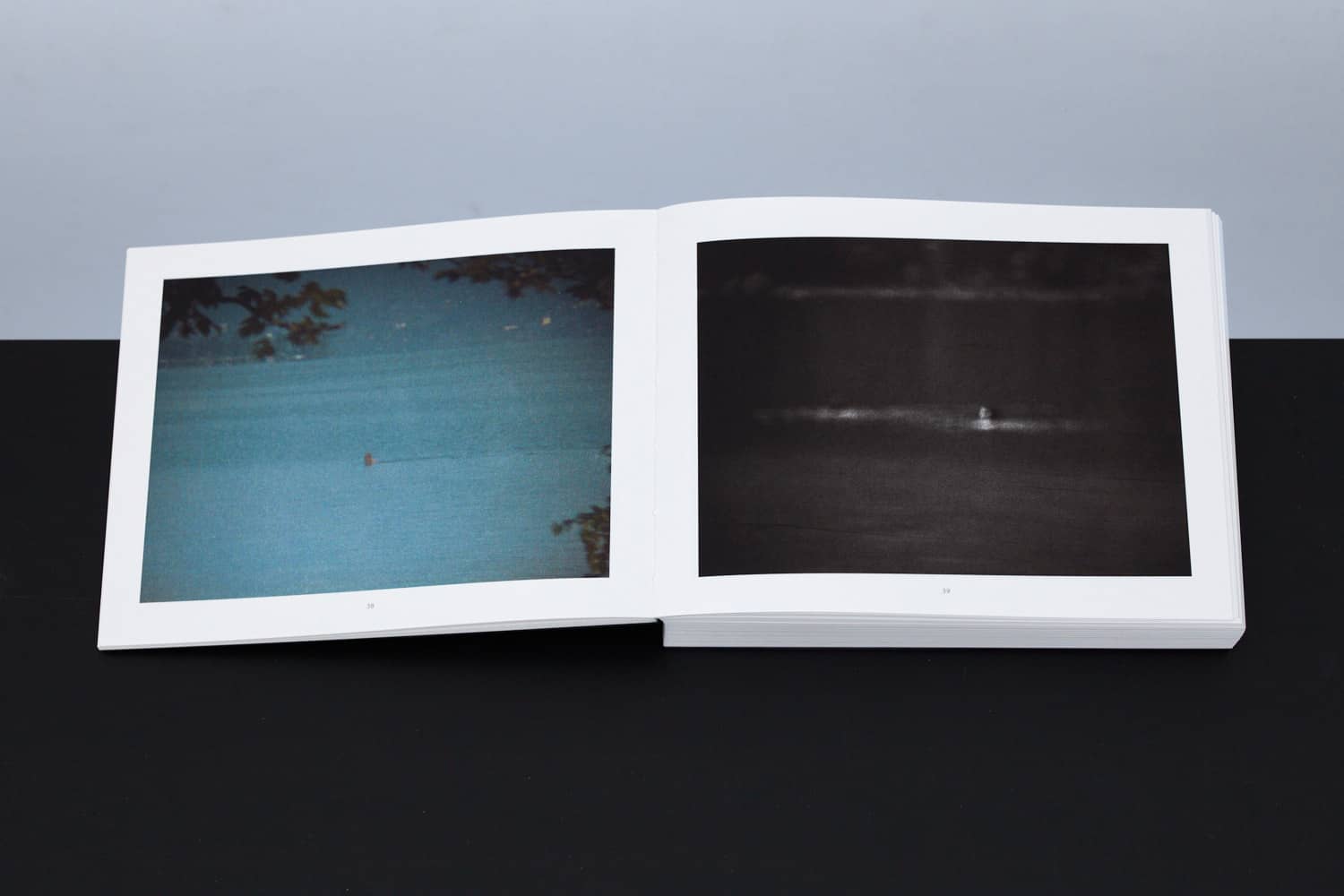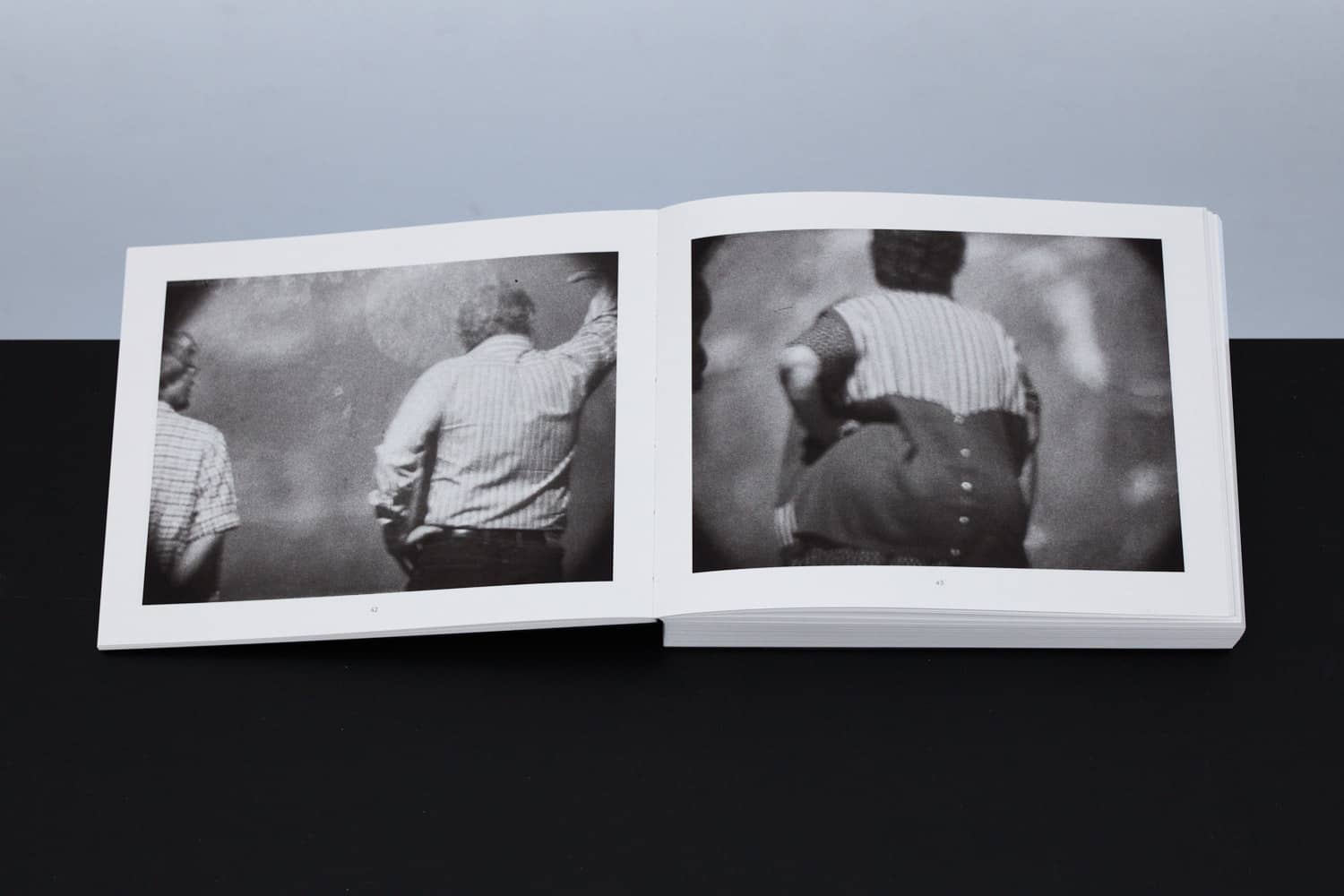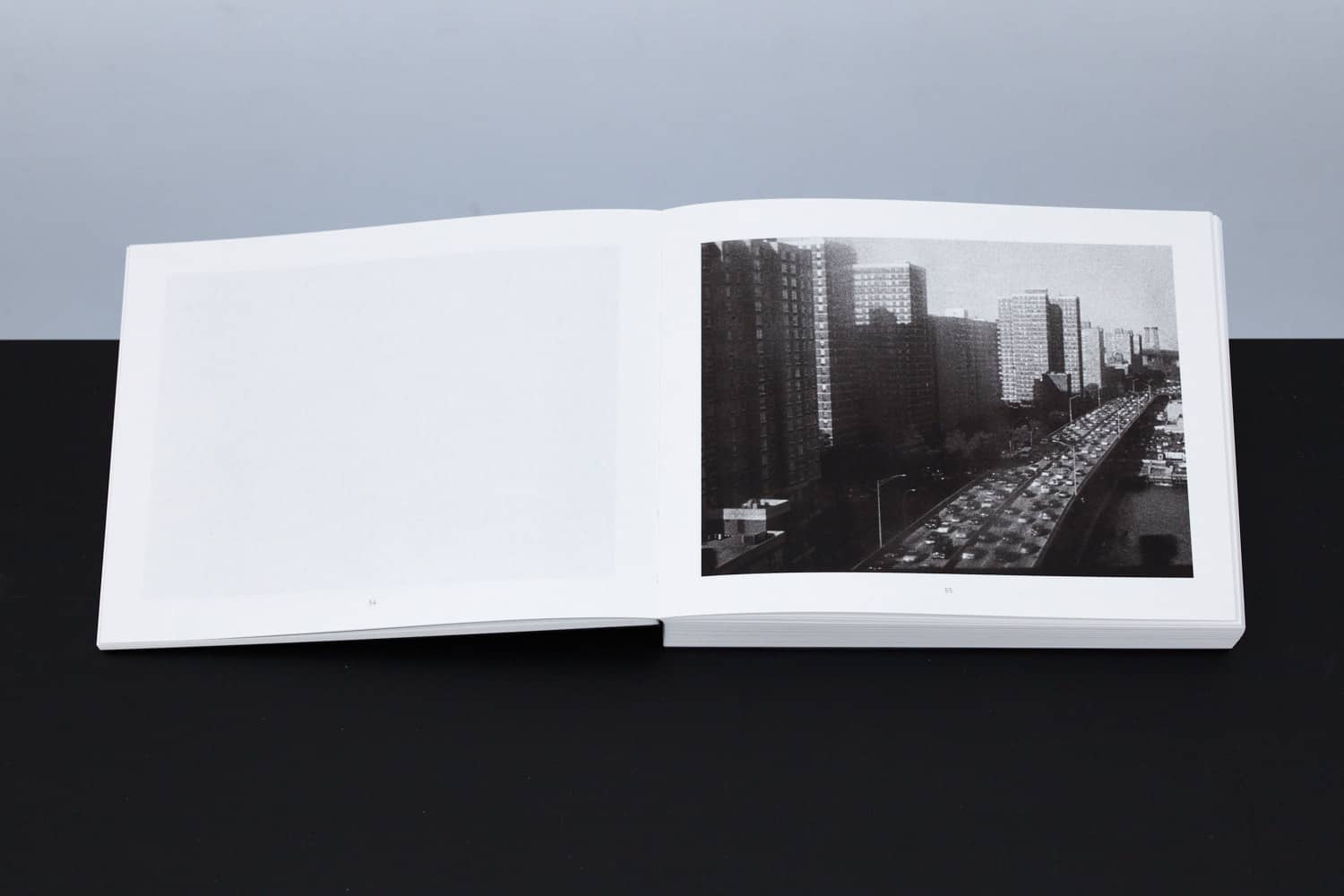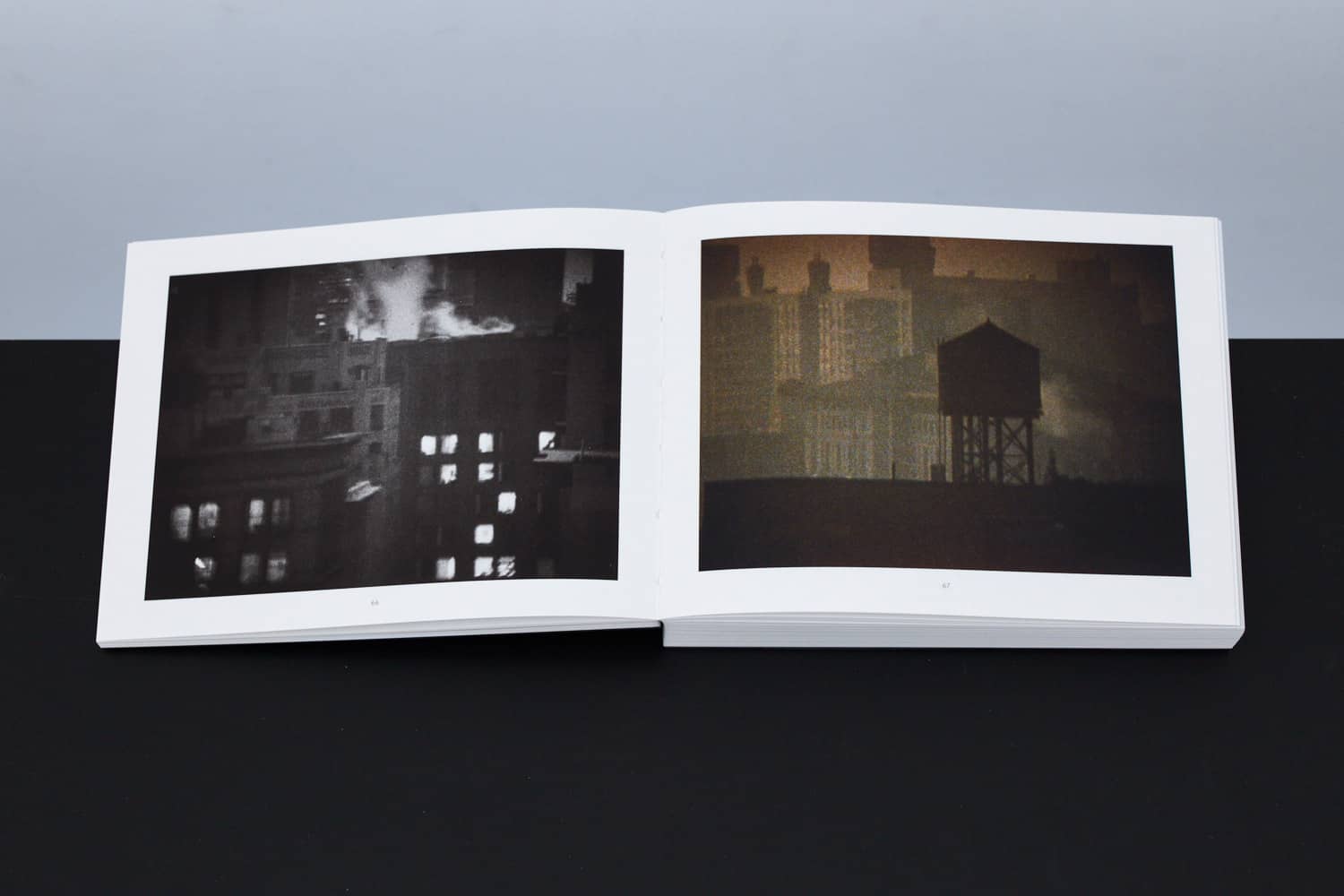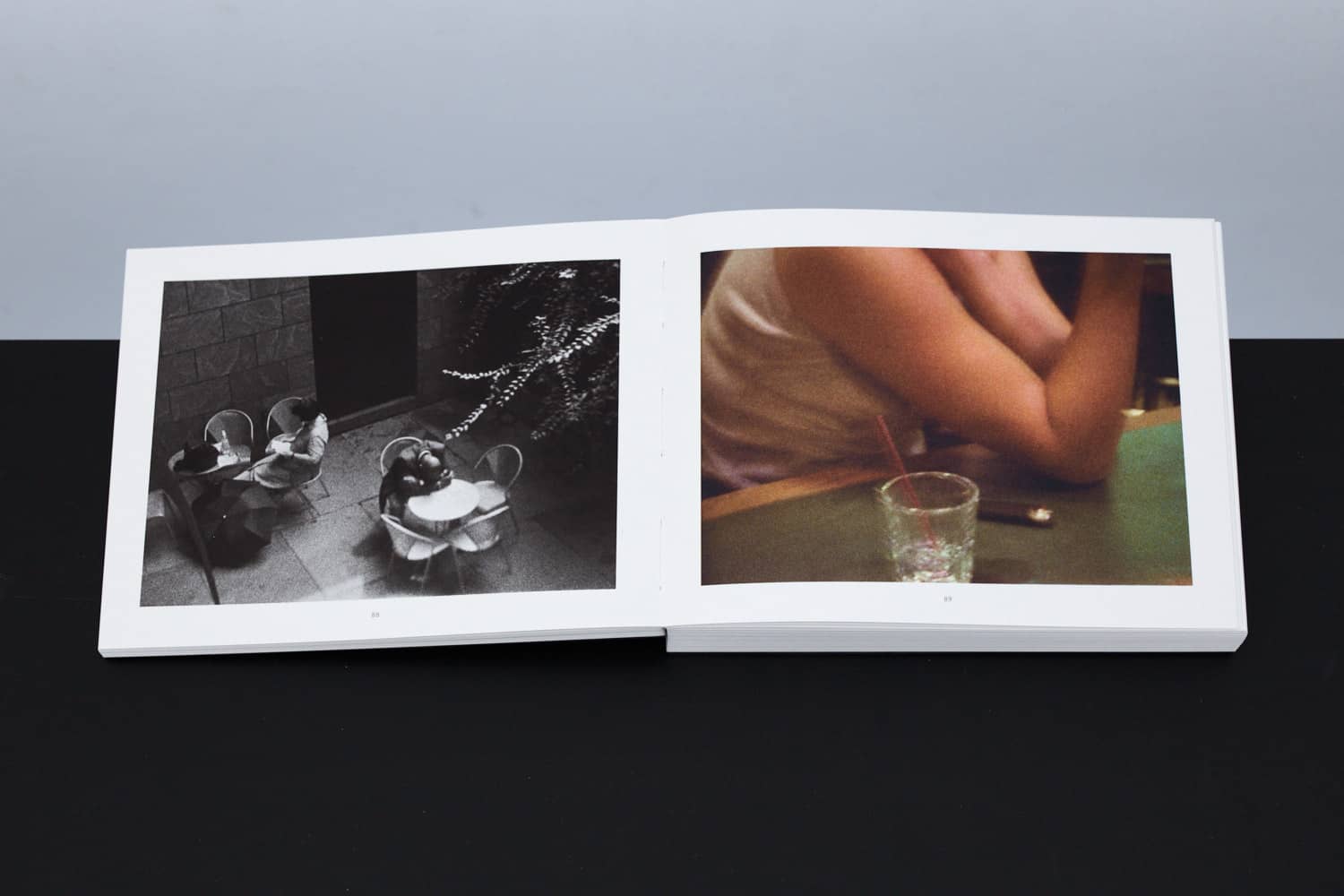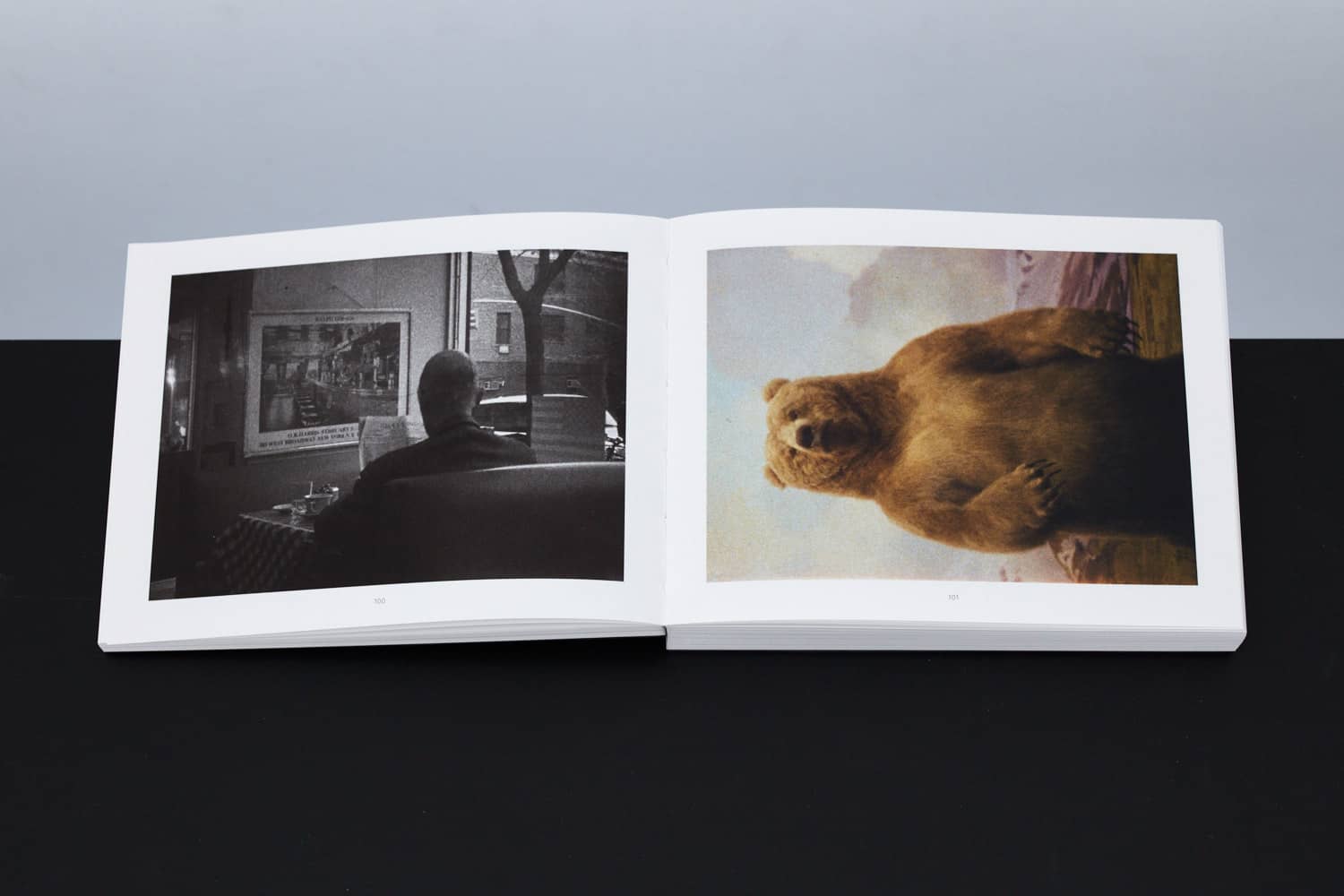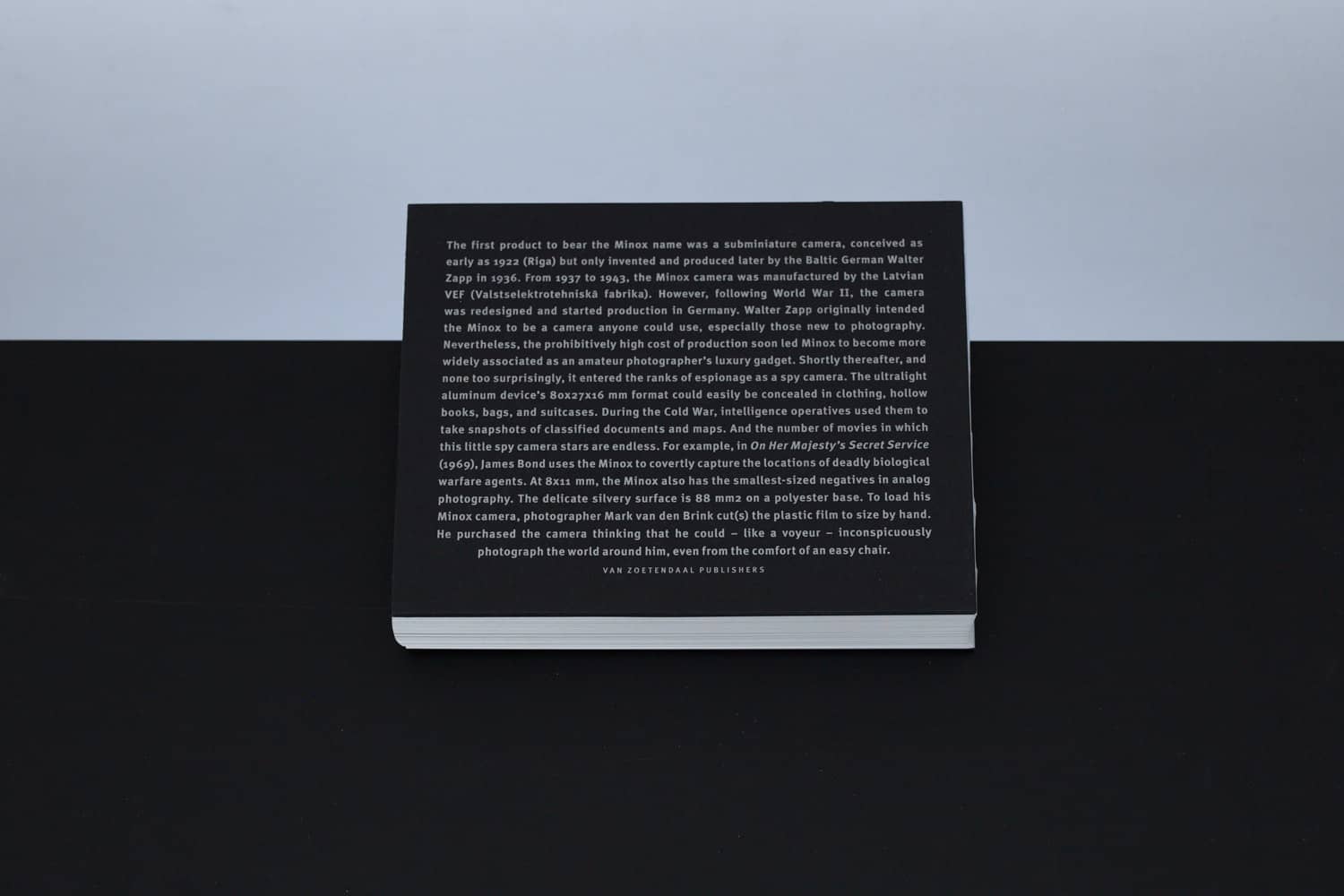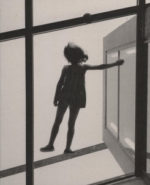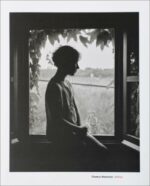1ère édition tirée à 750 exemplaires.
Le photographe Mark van den Brink découpe lui-même la pellicule avant de le charger dans son appareil photo Minox. Il a acheté l’appareil photo avec l’idée qu’il vous permet de photographier les choses autour de vous discrètement, comme un voyeur. Au cours de sa formation à la Gerrit Rietveld Academy d’Amsterdam, il est devenu captivé par la distorsion, la structure rugueuse et les imperfections qui résultent de la fabrication de gravures dans la chambre noire. Cela correspond parfaitement à sa manière de voir. Lors d’un voyage à travers les Alpes, il a expérimenté en fixant sa caméra à des jumelles ou à un télescope, afin que les montagnes se sentent proches et en même temps encore plus éloignées. Les Minox Files incarnent cette curiosité brute ; photos en n.b. et en couleurs.
Photographer Mark van den Brink cuts the polyester film to size himself before loading it into his Minox camera. He bought the camera with the idea that it allows you to photograph the things around you inconspicuously, like a voyeur. During his training at the Gerrit Rietveld Academy in Amsterdam, he became captivated by the distortion, rough structure, and imperfections that resulted from making prints in the darkroom. It felt self-evident to his way of looking. On a trip through the Alps, he experimented by fastening his camera to binoculars or a telescope, so that the mountains felt close and at the same time even further away. ‘The Minox Files’ embodies this raw curiosity.
The first product to bear the Minox name was a subminiature camera, conceived as early as 1922 (Riga) but only invented and produced later by the Baltic German Walter Zapp in 1936. From 1937 to 1943, the Minox camera was manufactured by the Latvian VEF (Valstselektrotehniskā fabrika). However, following World War II, the camera was redesigned and started production in Germany. Walter Zapp originally intended the Minox to be a camera anyone could use, especially those new to photography. Nevertheless, the prohibitively high cost of production soon led Minox to become more widely associated as an amateur photographer’s luxury gadget. Shortly thereafter, and none too surprisingly, it entered the ranks of espionage as a spy camera. The ultralight aluminum device’s 80x27x16 mm format could easily be concealed in clothing, hollow books, bags, and suitcases. During the Cold War, intelligence operatives used them to take snapshots of classified documents and maps. And the number of movies in which this little spy camera stars are endless. For example, in On Her Majesty’s Secret Service (1969), James Bond uses the Minox to covertly capture the locations of deadly biological warfare agents. At 8×11 mm, the Minox also has the smallest-sized negatives in analog photography. The delicate silvery surface is 88 mm2 on a polyester base. To load his Minox camera, photographer Mark van den Brink (Netherlands, 1965) cut(s) the plastic film to size by hand. He purchased the camera thinking that he could – like a voyeur – inconspicuously photograph the world around him, even from the comfort of an easy chair.


